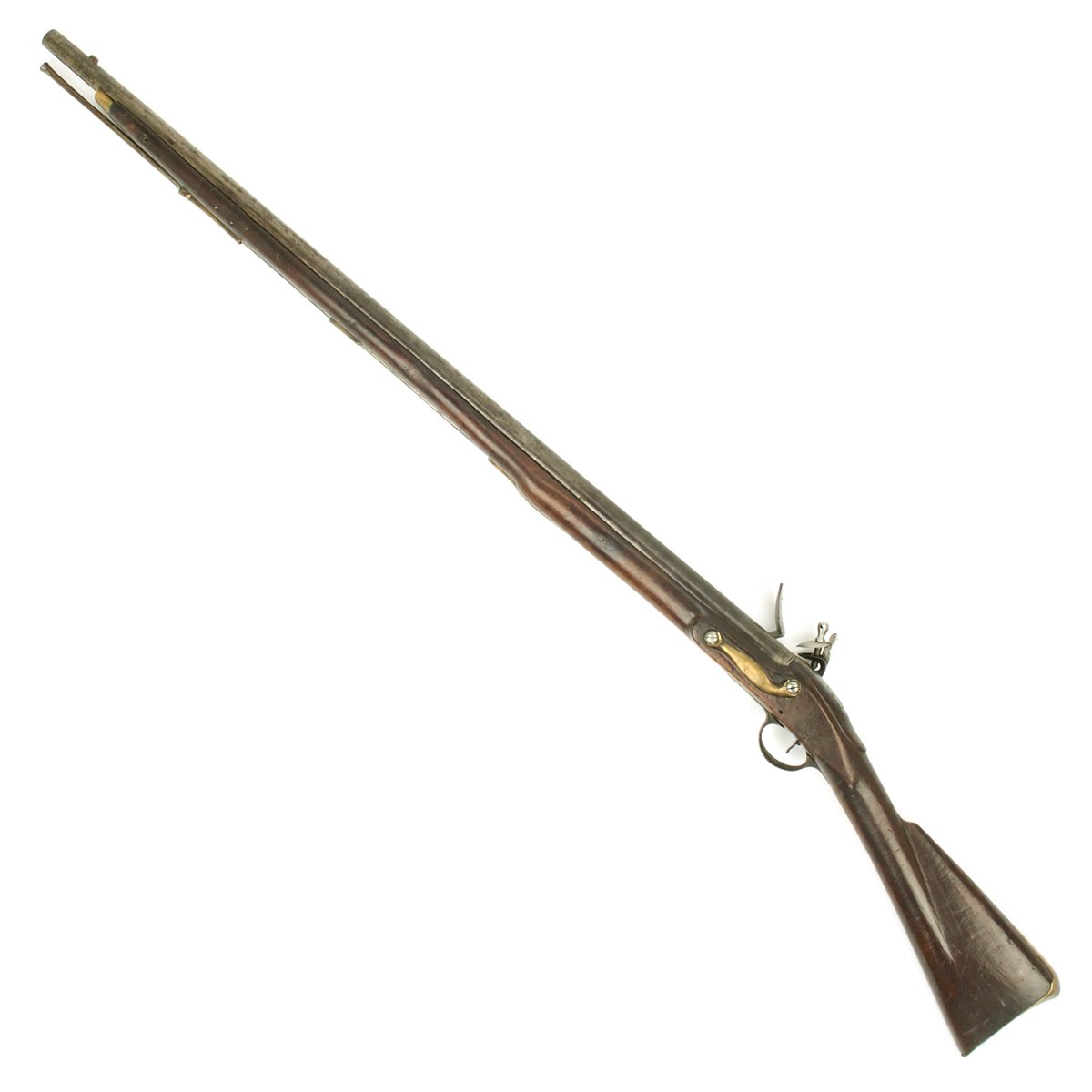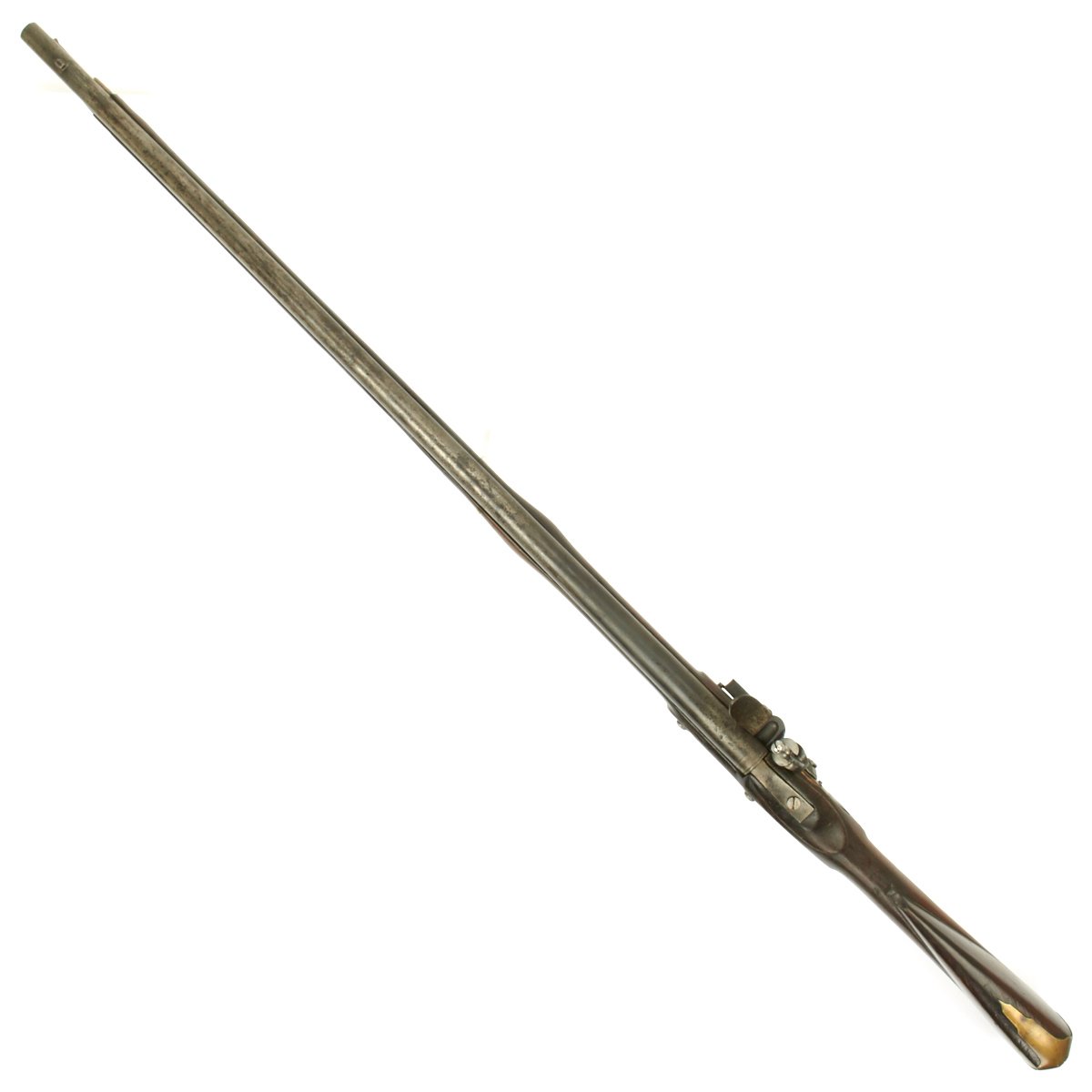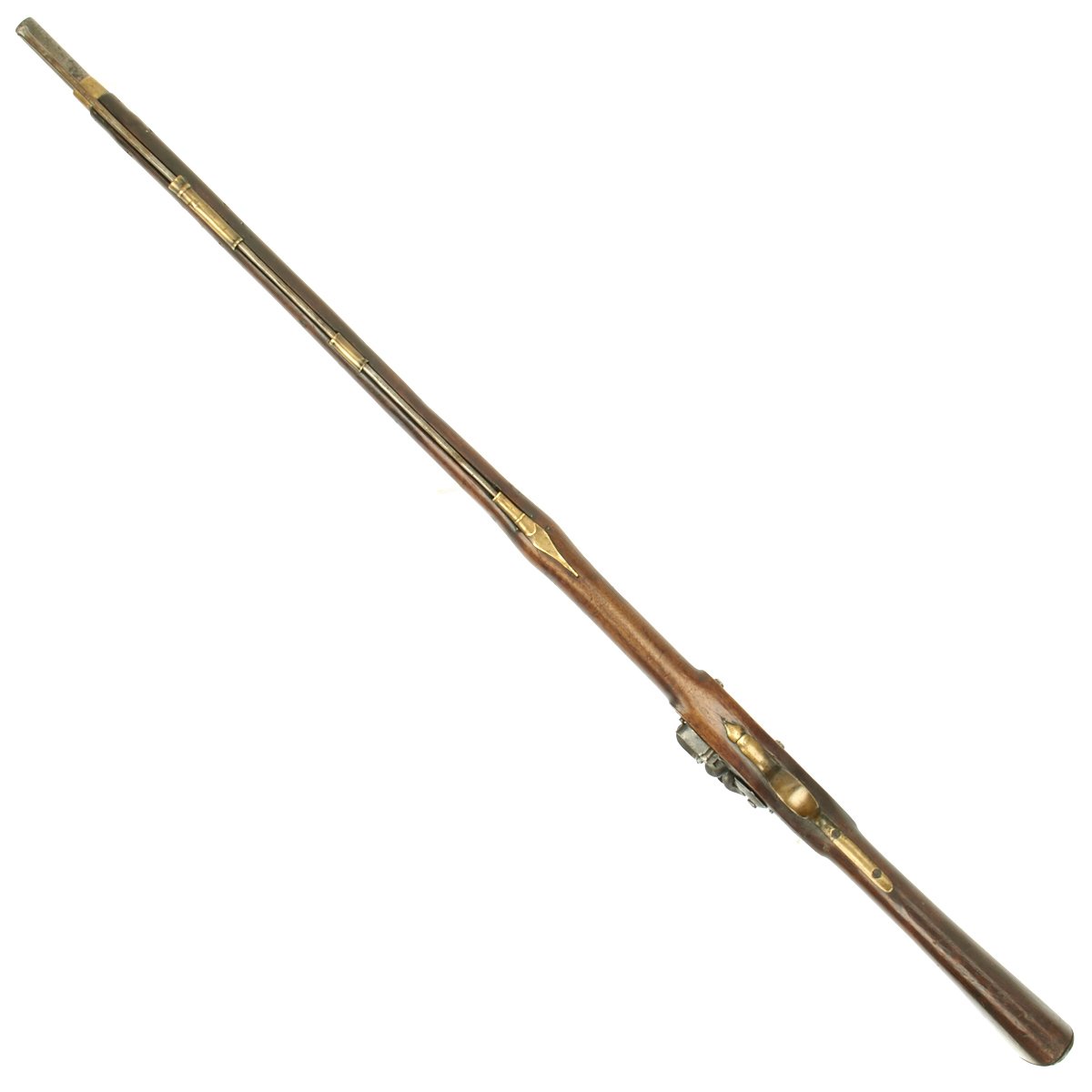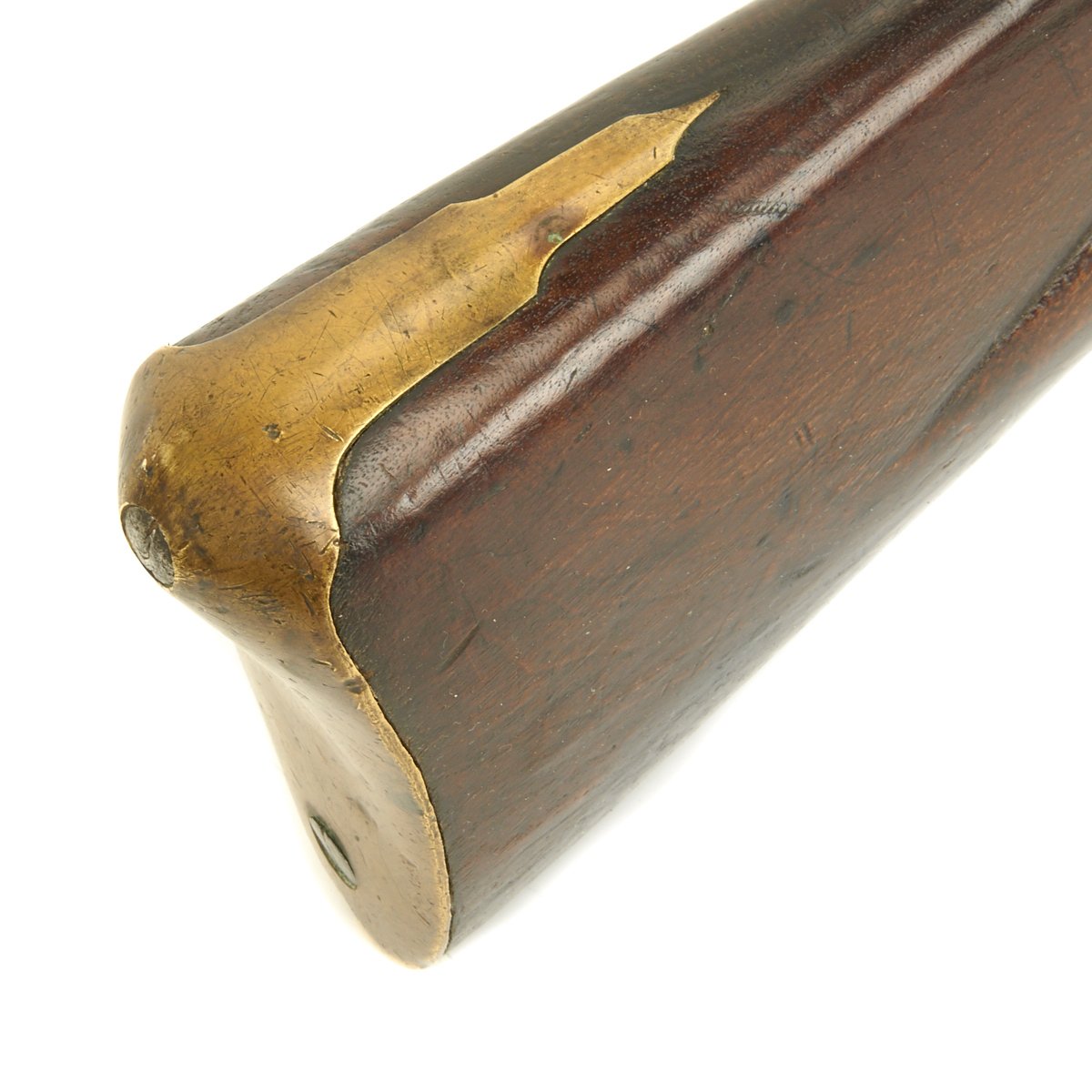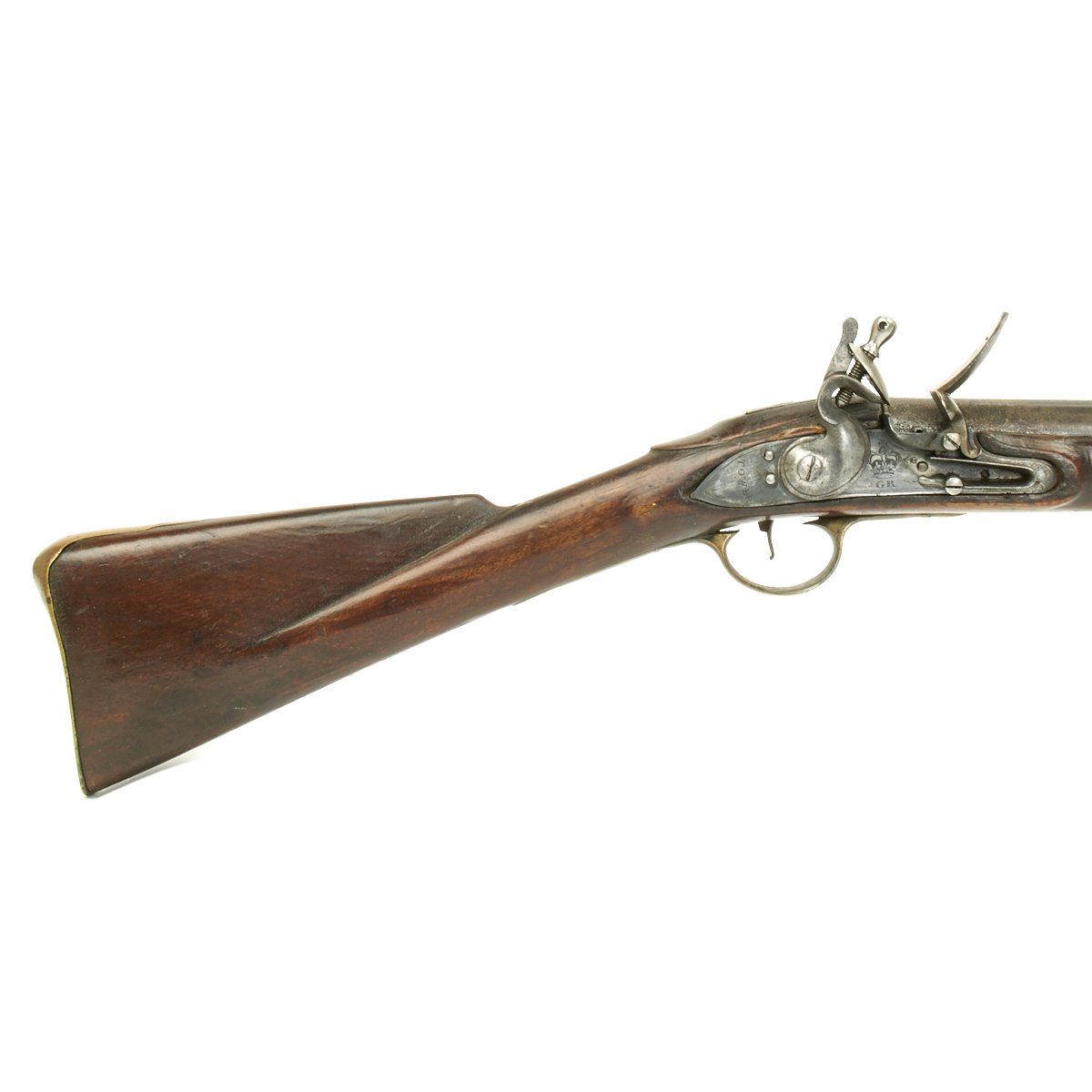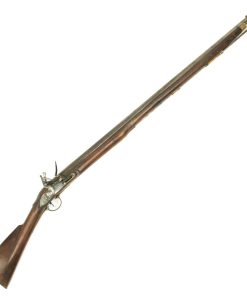Original British Napoleonic Wars P-1796 Third Model Brown Bess Flintlock Musket – 28th Regiment Original Items
$ 2.995,00 $ 748,75
Original Item: One Only. This is a great example of a regimentally marked really early Third model “India Patterm” Brown Bess, which still retainins the “bannister rail” butt stock. This feature was basically done away with after 1807. The musket has a full 39″ regulation length, .75″ smoothbore iron barrel, which bears British Proof Marks, though they are slightly eroded due to powder corrosion.
The lock plate is full marked with Crown over “G.R.” mid lock, and “TOWER” across the tail. All regulation brass furniture, together with correct issue iron ramrod. Shows use but remains in amazingly tight and clean condition. The lock and barrel have old pitting from powder burns. The barrel is marked to the:-
28TH REGT of FOOT
The 28th Regiment of foot was originally raised in 1694 as Sir John Gibson’s Regiment of Foot and has a sparkling history of battles and actions right up to the Napoleonic Wars. It saw action in the colonies and on the continent, being redesignated the 28th Regiment of Foot in 1751 after service in the War of Austrian Succession. In 1782 the regiment was renamed the 28th (North Gloucestershire) Regiment of Foot, as part of the reforms to create a territorial association for each regiment. Under this name they Served in Egypt in 1801 at The Battle of Alexandria, the Battle of Copenhagen in 1808 and went right through the Peninsula Wars through Portugal, up through Spain and into France between 1809 and 1813.
In 1815 they served in square at Quatre Bras and there is a famous Oil Painting of the action by a Lady Butler. They took part in the Battle of Waterloo, commanded by Lieutenant Colonel Sir Charles Belson and were part of the 8th Brigade under General James Kempt. Their conduct earned the Regiment for a “mention in dispatches” by the Duke of Wellington, a very great honor.
The Classic Third Model Brown Bess with a regimental history, ready to display.
Fast Shipping with Professional Packaging
Thanks to our longstanding association with UPS FedEx DHL, and other major international carriers, we are able to provide a range of shipping options. Our warehouse staff is expertly trained and will wrap your products according to our exact and precise specifications. Prior to shipping, your goods will be thoroughly examined and securely secured. We ship to thousands clients each day across multiple countries. This shows how we're dedicated to be the largest retailer on the internet. Warehouses and distribution centres can be located throughout Europe as well as the USA.
Note: Orders with more than one item will be assigned a processing date depending on the item.
Before shipping before shipping, we'll conduct a thorough inspection of the items you have ordered. Today, the majority of orders will be delivered within 48 hours. The delivery time will be between 3-7 days.
Returns
The stock is dynamic and we cannot completely manage it because multiple stakeholders are involved, including our factory and warehouse. So the actual stock may alter at any time. It's possible that you may not receive your order once the order has been made.
Our policy is valid for a period of 30 days. If you don't receive the product within 30 days, we are not able to issue a refund or an exchange.
You can only return an item if it is unused and in the same state as the day you received it. You must have the item in its original packaging.
Related products
Uncategorized
Uncategorized
Armoured Fighting Vehicles of the World: AFVs of World War One (Hardcover Book) New Made Items
Uncategorized
Uncategorized
Uncategorized
Uncategorized
Uncategorized
Armored Burgonet Helmet & Polearm from Scottish Castle Leith Hall Circa 1700 Original Items
Uncategorized
Band of Brothers ORIGINAL GERMAN WWII Le. F.H. 18 10.5cm ARTILLERY PIECE Original Items
Uncategorized
Uncategorized
Uncategorized
Uncategorized
Uncategorized
Angolan Rebel 1970s era 60mm Inert Display Mortar from Angolan Civil War Original Items
Uncategorized
Uncategorized

